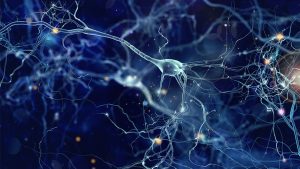
Have you ever heard that the brain’s development stops during childhood? Did it ever make you wonder how you still can learn to speak a foreign language, ride a bike, or solve calculus problems? While you might not have gotten a chance to do any of those things when you were little, you can learn them at almost any point in your life. How? Researchers have been hunting for an answer for the last seventy years.
Neurogenesis is the process by which new neurons develop. For a long time, scientists believed that neurogenesis occurs only during the prenatal period, with children being born with a finite amount of neurons. However, research in the 1960s suggested that new cells develop from stem cells in the brain even during adulthood, though at much slower rates (Altman, 1965).
New neurons come from divided neural stem cells, which travel to particular brain regions and mature into fully functioning neurons. Scientists track these migrations by adding chemicals inside the progenitor – “parent” – stem cells and matching the corresponding chemical signatures after the divisions. Originally, animals such as non-human primates and mice were the main test subjects, but we now have a considerable amount of data on human neurogenesis. Scientists have recorded the occurrence of human neurogenesis in the ninth decade of some test subjects’ lives (Anacker, 2017).
The primary region of neurogenesis is the hippocampus, a structure responsible for learning and memory – and partially for moods (Gage, 2021). It is highly vulnerable to neurological disorders such as major depressive disorder and generalized anxiety disorder, which diminish the number of functioning neurons inside it. Understanding more about neurogenesis might help scientists develop better treatments for these conditions by reversing their effects and maintaining a stable number of cells in the hippocampus.
A more recent idea that research introduced is that neurogenesis supports not only the number of neural cells in the brain but also optimizes the neural networks they form. A research group found that newly generated granule cells – the smallest and the most common type of neurons – promoted neural sparsity (leaving only important neurons and eliminating all the ineffective ones) in the hippocampus, allowing for better and faster information processing. Thus, the brain seems to have more tools to rewire itself, maintaining the balance between the number of cells and their effective organization (McHugh, 2022).
Despite dozens of years of research, neurogenesis might be one of the oldest topics in neuroscience which has not still disclosed its secrets. At the same time, the prospects it opens for medical and scientific fields are enormous. Maybe, one day, with the secrets of neurogenesis uncovered, humans will finally see the world that has a treatment available for any neuropsychological disorder.
References
Altman, J., & Das, G. D. (1965). Post-Natal Origin of Microneurones in the Rat Brain. Nature, 207(5000), 953–956. https://doi.org/10.1038/207953a0
Anacker, C., & Hen, R. (2017). Adult hippocampal neurogenesis and cognitive flexibility—Linking memory and mood. Nature Reviews Neuroscience, 18(6), 335–346. https://doi.org/10.1038/nrn.2017.45
Gage, F. H. (2019). Adult neurogenesis in mammals. Science, 364(6443), 827–828. https://doi.org/10.1126/science.aav6885
Gage, F. H. (2021). Adult neurogenesis in neurological diseases. Science, 374(6571), 1049–1050. https://doi.org/10.1126/science.abm7468
McHugh, S. B., Lopes-dos-Santos, V., Gava, G. P., Hartwich, K., Tam, S. K. E., Bannerman, D. M., & Dupret, D. (2022). Adult-born dentate granule cells promote hippocampal population sparsity. Nature Neuroscience. https://doi.org/10.1038/s41593-022-01176-5